
Planting for Pollinators
Last Updated: Mar 19, 2025Rachel Carson sounded the alarm in 1962 with the release of her book, Silent Spring. The American marine biologist, author, and conservationist detailed how the pesticide DDT had destroyed or was damaging wildlife, birds and bees, farm animals, domestic pets, and even human health. The book elicited outrage and inspired the modern environmental movement.
In recent years, the decline of the honey bee has made headlines. Colony collapse disorder (CCD) has decimated the honeybee population. Why is that important? Over 75 percent of the world's flowering plants and just over one-third of every type of food crop worldwide depend on pollinators (insects and birds) to reproduce.
Recent statistics show that beekeepers in the United States have seen declines from an estimated six million hives to 2.4 million hives between 1947 and 2008. This 60 percent reduction in beehives is due to several human-caused factors. The reasons include extensive pesticide use, prolonged droughts caused by climate change, loss of bee habitat due to urban sprawl, and air pollution. From a purely statistical analysis, if honeybee populations continue to fall at current rates, managed honeybees will completely disappear by 2035. What would Carson think of the world's rapid decline of pollinators, especially bees?
The loss of managed honey bees is undoubtedly problematic. After all, who doesn't like a bit of fresh honey on their morning pancakes? Here at Rise, we have written about creating a "bee garden" and thus transform our sterile lawns into thriving bee oases. But focusing on the decline of honeybee populations is only one part of the pollinator equation. Homeowners can renovate their backyards to attract and protect bee populations and support all different types of pollinators—not just the honeybee.
Table of Contents
- Why Are All the Pollinators Important?
- What Are Some Home and Lawn Issues For Pollinators?
- How Can You Choose the Best Place for Your Pollinator Garden?
- How Can You Find and Plant Flower Species for Your Region?
- What Are Some Resources for Finding Native Plants?
- What Are More Tips for Planting a Pollinator Garden?
- Attracting Pollinators in Other Ways

Why Are All the Pollinators Important?
"The birds and the bees need help. Also, the butterflies, moths, wasps, beetles, and bats," wrote The New York Times in 2016. They wrote that a new report warned that an international effort is required to stop many species' extinction. These species promote the growth of hundreds of billions of dollars of food each year. The referenced report came from the Intergovernmental Science-Policy Platform on Biodiversity and Ecosystem Services, formed by the United Nations in 2012 and comprised of 124 countries.
The USDA Forest Service identifies other species that act as essential pollinators as well. The list includes eight different butterfly species, four different moths, three types of wasps, and two different types of bats. Beetles and even mosquitoes play a vital role in pollinating other plants. Hummingbirds are essential for helping to pollinate dozens of wildflower species.
Not Just Honeybees
Bees are indeed the primary pollinators of the majority of our food crops. But what few people realize is that the honeybee is only one of 4,000 types of native bee species in North America. Most people associate bees with giant hives and the fascinating social orders of honeybees. However, many of the thousands of native bee species make their nest in the ground. According to Cornell University, almost three-fourths of the bee species build their nests in burrows underneath the soil.
All bee species are considered to be important pollinators. They spend the majority of their lifetimes collecting pollen. The minuscule hairs that cover bees' bodies act as a magnet to gather pollen, which is then deposited on other plants as the bees go about their day. Pollen is a crucial protein source to feed their larva to ensure future populations continue to thrive.

What Are Some Home and Lawn Issues For Pollinators?
Urban and suburban space represents a fundamental change in habitat for pollinators. Prairie gardens, xeriscapes, and yards planted for pollinators are still dramatically different from the wild. Most pollinator species will find ways to adapt to changes in their environment. Nevertheless, several practices negatively affect the health of many types of pollinators.
Use of Neonicotinoid Insecticides
About a decade ago, neonicotinoid insecticides were classified as "more environmentally friendly" because they were shown not to cause much damage to mammals. Unfortunately, recent research has shown that "neonicotinoids are persistent, and even as they degrade, they continue to remain toxic to bees." Neonicotinoids are usually systemic, which means that the roots can absorb them and move through the entire plant into pollen nectar. Today, neonicotinoid insecticides are in a wide variety of common garden insecticides. This includes brands like Bayer Advanced 3-in-1 and Ortho Bug B Gon Year-Long Tree & Shrub Insect Control. While these products might protect your roses or garden ornamentals from certain pests, they prove to be extremely toxic to insect pollinators.
In addition, many gardening stores that grow flowering plants use insecticides that are harmful to bees. For perennials, it takes several years for the root system to rid itself of these toxins. So if you are purchasing flowering plants, be sure to find a nursery that does not use insecticides on its plants.
Lawn Care Killing Ground Nesting Bees
There are hundreds of types of native bees that nest in the ground. They usually create "tubes" dug between three to six inches into the soil. Lawnmowers—and especially chemical fertilizers and pesticides applied to lawns—are lethal to these bee species, essential pollinators in early spring. Read here for some ideas about how to enjoy a healthy lawn without relying on chemical pesticides that are toxic to ground-nesting bees.
Impervious Areas
Bees, hummingbirds, and other pollinators would have difficulty finding pollen and nectar in a yard covered by cement or asphalt. The average American yard is covered by 19 percent impervious surfaces, including rooftops, driveways, sidewalks, and patios. (To reduce the impervious surface, consider planting a green roof or using permeable pavers.)
Natural Risks to Pollinators
Avoid the types of flowers that are toxic to pollinators. These include everyday household flowers such as buttercups, rhododendrons, and Mountain Laurel.

How Can You Choose the Best Place for Your Pollinator Garden?
Find as large a space as possible in your yard for your native plant or pollinator garden. (Better yet, replace your entire lawn with these plants, as you will save time, money, and water from not having to mow it or irrigate it) Make sure the site and the plants you select have similar sun, shade, and water considerations. For example, don't plant full-sun native perennial flowers or grasses that like dry soil in a shady wet spot. Read gestation and bloom times carefully (on the seed packet or in your catalog) to plan the garden so that something is continually in bloom throughout the growing season. Continuous bloom, from spring through fall, will provide ongoing nectar, shelter, and habitat for pollinators.

How Can You Find and Plant Flower Species for Your Region?
Planting flowers is an excellent strategy to attract several types of insects and pollinators. But before heading to your local nursery to purchase your favorite flowers, a little bit of research can help you identify the best pollinator species for your ecosystem.
Native plants are defined as plants indigenous to a given area before European colonization. "Native plants have formed symbiotic relationships with native wildlife over thousands of years, and therefore offer the most sustainable habitat," writes The National Wildlife Federation. "A plant is considered native if it has occurred naturally in a particular region, ecosystem, or habitat without human introduction." Native plants produce four times more pollen than non-natives. Native bees have been visiting native plants for centuries.
What Are Some Resources for Finding Native Plants?
- Here is a guide to finding native plants in your region.
- Audubon has a handy database for finding native plants suitable to your location.
- Your local botanical garden or conservatory, native plant society, Wild One's chapter, and state Department of Natural Resources can help.
- The Xerces Society offers helpful region-specific guides to find the most important pollinator species for your specific state and bio-region.
- Heather Holm's book and website are useful resources for identifying which native plants work best for different types of soil and varying sunlight.
What Are More Tips for Planting a Pollinator Garden?
- Find and plant vegetation that blooms throughout the growing seasons so that different types of pollinators will be able to thrive from early spring to the final days of autumn.
- Mix up flowers in all shapes, sizes, and colors with some grasses, shrubs, and fruit trees. Bees love blue, purple, violet, white, and yellow.
- Avoid hybrids or cultivators, modern iterations of native plants, especially those with exceptionally large or double flowers, as they may not be beneficial: In order to create bigger flashier plants, breeders often eliminate a plant's nectar, smell, or pollen—aspects of native plants essential for pollinators.
- Plant flowers in color blocks to help pollinators find their food sources. (Hummingbirds love red!)

Attracting Pollinators in Other Ways
Larval Host Plants
Numerous websites on gardening for pollinators, including the USDA Forest Service site, list ways to attract - and provide habitat - for pollinators. "Include larval host plants in your landscape," suggests the website. They say that colorful butterflies will fill your yard if you grow plants for their caterpillars. The caterpillars will eat the plants, so be sure to plant them where unsightly leaf damage won't be obvious.
Gardening & Outdoor
Shop the best high-performing gardening and outdoor products that impact your health, wealth, and the planet through their use.
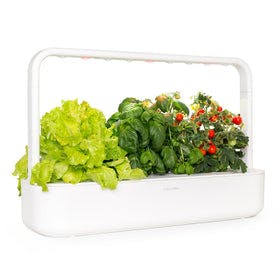
Click & Grow Smart Garden 9
Click & Grow
In Stock
3 Colors

Canarm CORIN LED Black Outdoor Light
Canarm
Out of Stock
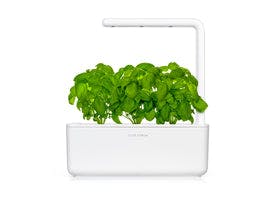
Click & Grow Smart Garden 3
Click & Grow
In Stock
3 Colors
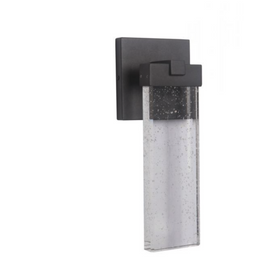
Craftmade Aria Outdoor LED Wall Mount Light
Craftmade
In Stock
2 Colors
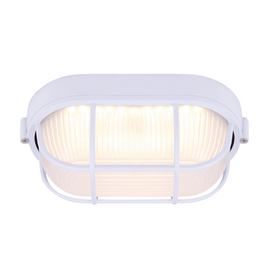
Canarm LOL386WH White LED Outdoor Sconce
Canarm
In Stock

Nutritower Vertical Hydroponic Indoor Garden
Nutritower
Out of Stock
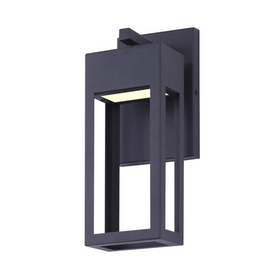
Canarm FAE LED Black Outdoor Light
Canarm
In Stock

Canarm BARDO LED Black Outdoor Light
Canarm
In Stock

Canarm SINDRI LED Black Outdoor Light
Canarm
In Stock

Canarm LOKI LED Black Outdoor Light
Canarm
In Stock

Bare Soil to Encourage Burrowing Bees
Bare soil is usually associated with erosion and the loss of soil fertility. However, small patches of bare soil in your yard can encourage burrowing bees and insects to take up residence in your yard. Purposefully leaving small areas of bare soil near flowering vegetation is a welcome sign for some bee species to begin burrowing into the ground.
Homes for Pollinators
Create homes for pollinators. You can make nesting sites and homes for bees by drilling holes in a block of wood. Consider building a bee condo, suggests the USDA Forest Service. You can do this by drilling holes of different sizes about 3 to 5 inches deep in pieces of scrap lumber. The lumber can then be mounted to a post or under eaves. Or purchase pre-made bee houses.
Native Grasses
Include tall native grasses in the pollinator garden as a protective habitat for pollinators. Leave dead tree limbs or shrubs—in a quiet corner of the yard, in a spot where no one will trip on them—as a habitat for bees. The USDA site suggests including a small salt lick, as well as orange slices, in the garden for pollinators to enjoy.
Nectar for Hummingbirds
Boost your garden's potential to attract hummingbirds by providing them with homemade nectar. Make nectar by combining four parts of water to one part table sugar. Do not use commercial hummingbird nectar mix (it contains chemicals), honey, artificial sweeteners, or fruit juice. Clean the feeder twice a week with hot, soapy water.
Combine With Your Veggie Garden
Do you have a fruit or veggie garden? Circle the area with a border of native flowers to improve pollination and serve as a food source for pollinators once your garden crops stop blooming. This sound practice attracts and supports beneficial insects that help control crop pests.
Winter Practices
Homeowners in northern climates are advised to leave their autumn leaves on the ground or pile them onto gardens to create a nursery for butterflies. For more tips, visit the Pollinator Partnership, an organization and website devoted to the health of pollinators through conservation, education, and research.
A myriad of other pollinators experiences stress, not just honeybees and not just birds and butterflies. Bats, flies, and native bees are equally in peril. By eliminating pesticide and herbicide use in your yard and creating habitat and food sources for pollinators, not only do you create a sustainable yard safe for you and your family to enjoy, but a sustainable landscape in which pollinators can find refuge as well. So as you are planning your garden, remember the pollinators!
Camille LeFevre
Camille LeFevre is an architecture and design writer based in the Twin Cities.
